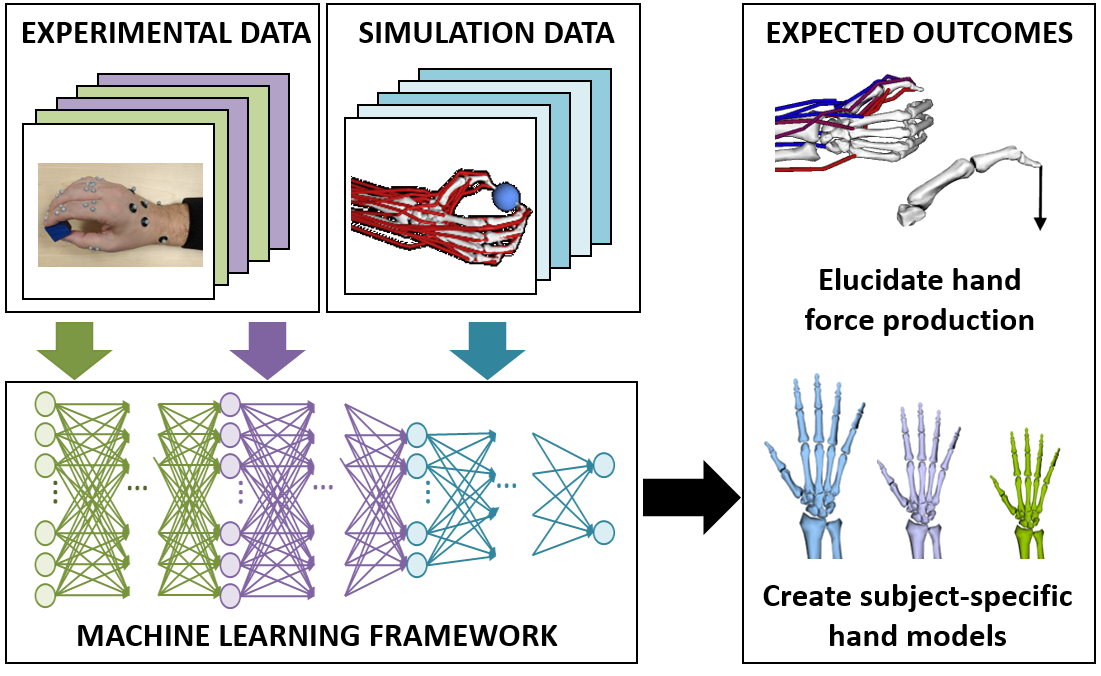Jennifer A. Nichols, Ph.D., assistant professor in the J. Crayton Pruitt Family Department of Biomedical Engineering, was recently awarded the National Institutes of Health (NIH) Trailblazer R21 Award for a project designed to use machine learning methods to understand the biomechanical mechanisms underlying force production in the hand. The award recognizes early stage or early career investigators pursuing research programs that explore the intersection of the life sciences with engineering and the physical sciences.
The interdisciplinary project is a collaborative effort between Nichols and Joel B. Harley, Ph.D., assistant professor in the Department of Electrical and Computer Engineering. The project titled, “A Transfer Learning Framework for Creating Subject-Specific Musculoskeletal Models of the Hand” is a three-year, nearly $600,000 grant funded by the NIH National Institute of Biomedical Imaging and Bioengineering (NIBIB).
Restoring hand function remains an elusive goal for many clinical conditions, including stroke, osteoarthritis, amputation, and traumatic injury. The hand’s anatomical complexity makes restoring hand function particularly challenging because altering any one parameter in the hand can have cascading effects that are difficult to predict, but essential to control.
As a critical step toward informing personalized treatments for the hand, the team will study how subject-specific differences influence hand function. Completion of this proposal will rely on the collection of three datasets that are designed to provide varying levels of biomechanical detail and require varying levels of effort to collect. These datasets include (1) a simulation dataset containing 500,000 simulations fully describing all musculoskeletal parameters involved in hand force production, (2) a dense, biomechanical dataset that describes the kinematics, kinetics, and muscle activity required for hand force production in 30 adults, and (3) a sparse, clinically-inspired dataset that describes demographics, anthropometrics, and clinical metrics of hand function in 1000 adults.
The team will utilize machine learning methods to examine how subject-specific differences influence hand function and create subject-specific computer models from easy to obtain clinical data. Completion of this project will critically advance the ability to efficiently create subject-specific models of the hand and understand the biomechanical mechanism underlying hand force production.
“For musculoskeletal models to be useful clinical tools, rapid development of patient-specific, pathological models must be achieved. At the hand, a critical step toward this development is efficient creation of subject-specific models of the healthy hand,” Nichols said. “We are excited to evaluate how machine learning can help us achieve our goal of rapidly creating personalized models.”
